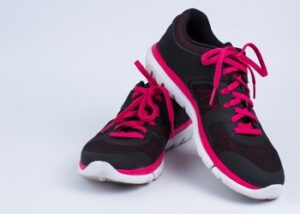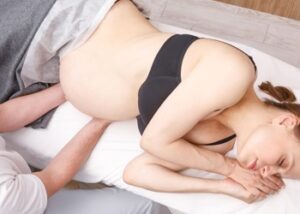Experiencing lower back pain is a common complaint amongst pregnant women. As babies grow and increase in size and weight, so too are women’s bodies subjected to many changes. Weight gain, postural changes, muscle separation and the softening and stretching of ligaments to prepare for labour can all lead to aches and pains in the lower back.
The good news is, there are certain things expecting mothers can do to help manage lower back pain during pregnancy. We’ll explore some of these things in greater detail below.
Back Pain During Pregnancy: Common Causes
As mentioned earlier, there are several reasons why women develop lower back pain during pregnancy. Common causes include:
- Hormonal changes – during pregnancy, a hormone called relaxin is released which loosens the ligaments and joints in the pelvis in preparation for labour. Relaxin can also make you feel off-balance and cause pain.
- Increased weight – women typically gain between 11.5kg-16kg in weight during pregnancy. This weight gain along with the weight of a growing baby causes stress on the spine which often results in back pain.
- Postural changes – shifts in your body’s centre of gravity due to pregnancy means your body has to compensate and readjust your posture, often leading to pain in your lower back.
- Muscle separation – as the uterus expands, the abdominal muscles may separate which can worsen back pain.
Managing Lower Back Pain
There are many different ways for women to relieve the pain and discomfort experienced in their lower back during pregnancy. Some of these methods include:
1. Getting Regular Exercise

Including exercise in your daily routine can keep your back strong, increase flexibility and strengthen muscles. A list of exercises that are generally considered safe during pregnancy includes walking, swimming, pelvic floor exercises, yoga and Pilates.
Be sure to check in with your doctor first before taking up a regular exercise routine to ensure you are safe to do so.
2. Watching Your Posture
Maintaining good posture is important during pregnancy. Avoid slouching to minimise any strain on your spine.
While standing: try to keep as upright as possible with your feet pointing in the same direction and your weight evenly balanced.
While seated: keep your back as straight as possible with your shoulders back. Use a rolled-up towel or lumbar roll at the curve of your back for some added support.
3. Getting Support While You Sleep

Try to sleep on your side (as opposed to on your back) and keep your knees slightly bent. Use pregnancy pillows between your bent knees to help support both your back and belly while stabilising your hip and pelvic alignment.
4. Wearing A Maternity Belt
Wearing a maternity belt can help relieve pain in your lower back as well as in your joints and muscles. Maternity belts support the pelvic area by stabilising the pelvis as you do various activities throughout your day while at the same time, relieving pressure from your lower back.
5. Pregnancy Osteopathy Treatment
Osteopathic treatments during pregnancy can help decrease lower back and pelvic pain. Safe and gentle for both mum and baby, Osteopathic treatments are individually and carefully chosen for each patient with their comfort in mind.
Through applying gentle, hands-on manipulation with techniques such as stretching, gentle pressure and resistance, combined with a holistic body approach, Osteopathy can offer relief from lower backaches and pain associated with pregnancy.
6. Using Compresses

Applying a combination of hot and cold compresses to your back may offer relief for pregnancy back pain. Use a cold bag of ice or ice pack wrapped in a towel and apply to the painful area for up to twenty minutes at a time. After several days, try switching to a heat pack or a hot water bottle.
7. Avoid Lifting Heavy Objects
Where possible, avoid lifting heavy objects. There’s nothing worse than pulling a muscle or even developing a hernia during pregnancy.
If you simply can’t avoid lifting a slightly heavier object, be sure to do so with caution. Bend at the knees when picking something heavier up and when carrying items like shopping bags, try to distribute their weight evenly by holding a bag in each hand.
8. Wearing Comfy Footwear

Using the right footwear can help alleviate lower back pain. Wear shoes with good arch support for an even weight distribution. Avoid wearing high heels as this type of footwear can change your posture slightly and put additional pressure on your back, knee and ankle joints.
Pregnancy Osteopathy Treatment In Brisbane

If you’re experiencing pregnancy-related lower back pain and discomfort, a gentle Osteopathic treatment at Queensland Osteopathic Clinic can help.
We run a child-friendly clinic where you can take the time to receive Osteopathic care and treatment while your other children are with you. Our friendly front desk staff can assist by minding your children in our other waiting room while you receive the pain-relieving treatment that you need.
Get in touch with our team today on (07) 3202 5963 or via email to find out more about pregnancy Osteopathy treatments or to book an appointment.

